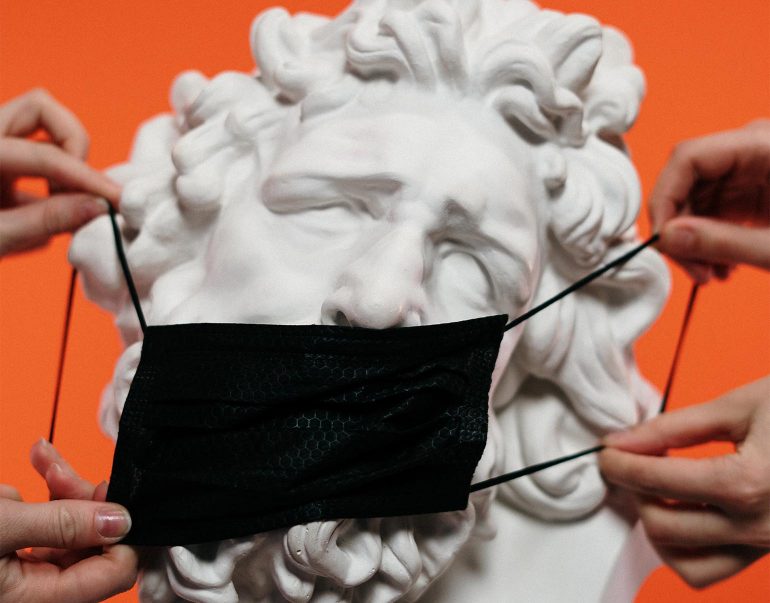It’s a typical morning as you line up at the local bakery. Looking around you notice that half the people around you are either without a mask or wearing them on their chins. As you get anxious, you wonder why people won’t wear masks when public messaging around the dire consequences is so widespread.
The answer to why people won’t wear masks lies in why they won’t wear a condom, or a helmet. The assumption that people are purely rational and their choices are based on logic is wrong, and that’s why public messaging is often lost. Instead, the answer lies in behavioural science that explains how people make their choices. According to it, there are several reasons for someone to not wear a mask. One is the behavioural economics principle of present bias, which states that people tend to give stronger preference to rewards that are closer to the present.
Add to this the principle of optimism bias, which states that humans are likely to believe that the worst won’t happen to them, even if it is already happening to those around them.
So, imagine two choices—one, of not wearing a mask and enjoying the experience of the outdoors mask-free, the other, the unforeseeable possibility that not wearing a mask could lead to an illness in the future. The latter, albeit life threatening, doesn’t seem a worthy trade off to the present reward.
Add to this the principle of optimism bias, which states that humans are likely to believe that the worst won’t happen to them, even if it is already happening to those around them. So, rising caseloads around people are not really deterrent to their behaviour of non-compliance. Behavioural science tells us, clearly, that people will behave irrationally despite effective awareness around the issue.
Compliance to social groups
So how might we use behavioural science to design the “right” behaviours. Behaviour is strongly guided by a sense of social identity. We shape ourselves according to a particular group we belong to. We try and mimic behaviour that will support its identity, and avoid behaviour that will betray the group. Like, when you’re in class and everyone raises their hand before speaking, you don’t outshout your neighbour, mostly because you don’t want to look like a jerk.
Similarly, establishing a norm around wearing masks for a desirable group of people ascribing to these values will help inculcate the habit in to masses.
Mask-wearing can be perceived as a social contract, those who comply with it belong to the group that promotes it. But imagine promoting the boring values of responsibility and the nasty guilt of noncompliance. It is unlikely that any of these values are desirable, and the need to belong to such a group of people is not likely to be strong enough.
Imagine structuring a group around the principles of inclusion that wearing a mask is about thinking about others in the community. Those who don’t belong to this group, are now ascribing to values of privilege and unfairness. By exclusion, people would try and avoid being associated with the undesirable values of privilege and unfairness, and would try and mimic behaviours of the group that prescribes to wearing the mask. By designing and communicating desirable social values we can encourage compliance with that social group.
Communicating for the right behaviour
A social campaign in Texas to avoid littering ran as “Don’t mess with Texas”. With a play on the word ‘mess’ by reinforcing community values of audacity and pluck, and encouraging the sense of belonging and pride to the group. Similarly, it helps to anchor the behaviour to the right references.
Communication is also about building the right aspirations. MaskUp is a program run by UNICEF where people posted mask-wearing in everyday situations on their social media accounts, encouraging compliance through the principles of “social sanction” and “normative conduct”.
Social etiquette of putting on a mask
Much has been said about how people can be shamed into wearing masks. At the same time, there are incidents of social fractures, violence even, between mask-wearers and mask-avoiders. As designers of social behavior, it is our responsibility to avoid the disruption of our social fabric. Reinforcement is as much about reward as it is about punishment, and as much about tolerance as it is about encouragement. If we focus mask-wearing as social etiquette, it is a desirable behaviour, something quite established, much like covering your mouth when you sneeze.
On the other hand, we also need to be aware of the cultural connotations around covering your face and how addressing those might help overcome barriers to adoption and use. As we promote mask wearing, it would help to remember what people believe and how they make their choices, to design the right messaging for promoting desirable social behaviours.
We are all in a zone outside of our usual comforts, and understanding our primitive instincts are the best way to predict our future behaviour. It’s useful to remember, there is nothing normal about the new normal.
***
About the author: Geetika is an engineer, MBA & researcher, who spends her time building connections between technology, business & users. She works at the Centre for Behavioural Research at Future Factory, advising organisations on how to build technology that addresses human behaviour.

